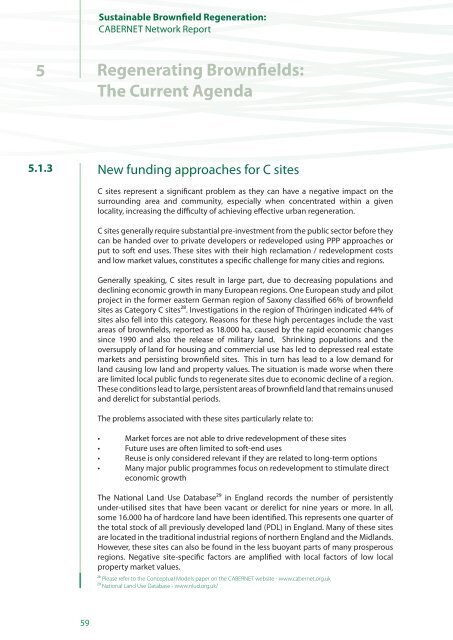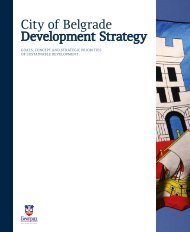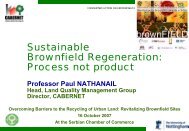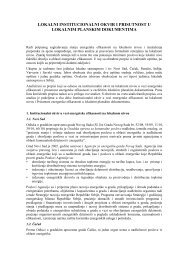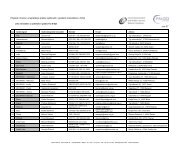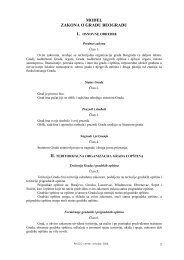Sustainable Brownfield Regeneration: CABERNET Network Report
Sustainable Brownfield Regeneration: CABERNET Network Report
Sustainable Brownfield Regeneration: CABERNET Network Report
You also want an ePaper? Increase the reach of your titles
YUMPU automatically turns print PDFs into web optimized ePapers that Google loves.
<strong>Sustainable</strong> <strong>Brownfield</strong> <strong>Regeneration</strong>:<strong>CABERNET</strong> <strong>Network</strong> <strong>Report</strong>5Regenerating <strong>Brownfield</strong>s:The Current Agenda5.1.3 New funding approaches for C sitesC sites represent a significant problem as they can have a negative impact on thesurrounding area and community, especially when concentrated within a givenlocality, increasing the difficulty of achieving effective urban regeneration.C sites generally require substantial pre-investment from the public sector before theycan be handed over to private developers or redeveloped using PPP approaches orput to soft end uses. These sites with their high reclamation / redevelopment costsand low market values, constitutes a specific challenge for many cities and regions.Generally speaking, C sites result in large part, due to decreasing populations anddeclining economic growth in many European regions. One European study and pilotproject in the former eastern German region of Saxony classified 66% of brownfieldsites as Category C sites²⁸. Investigations in the region of Thüringen indicated 44% ofsites also fell into this category. Reasons for these high percentages include the vastareas of brownfields, reported as 18.000 ha, caused by the rapid economic changessince 1990 and also the release of military land. Shrinking populations and theoversupply of land for housing and commercial use has led to depressed real estatemarkets and persisting brownfield sites. This in turn has lead to a low demand forland causing low land and property values. The situation is made worse when thereare limited local public funds to regenerate sites due to economic decline of a region.These conditions lead to large, persistent areas of brownfield land that remains unusedand derelict for substantial periods.The problems associated with these sites particularly relate to:• Market forces are not able to drive redevelopment of these sites• Future uses are often limited to soft-end uses• Reuse is only considered relevant if they are related to long-term options• Many major public programmes focus on redevelopment to stimulate directeconomic growthThe National Land Use Database²⁹ in England records the number of persistentlyunder-utilised sites that have been vacant or derelict for nine years or more. In all,some 16.000 ha of hardcore land have been identified. This represents one quarter ofthe total stock of all previously developed land (PDL) in England. Many of these sitesare located in the traditional industrial regions of northern England and the Midlands.However, these sites can also be found in the less buoyant parts of many prosperousregions. Negative site-specific factors are amplified with local factors of low localproperty market values.²⁸ Please refer to the Conceptual Models paper on the <strong>CABERNET</strong> website - www.cabernet.org.uk²⁹ National Land Use Database - www.nlud.org.uk/59


